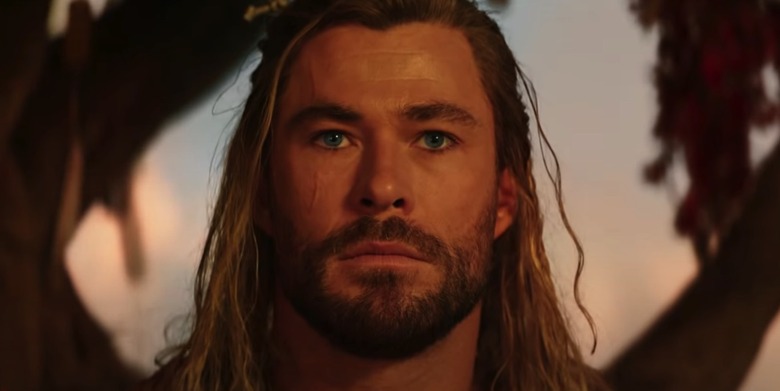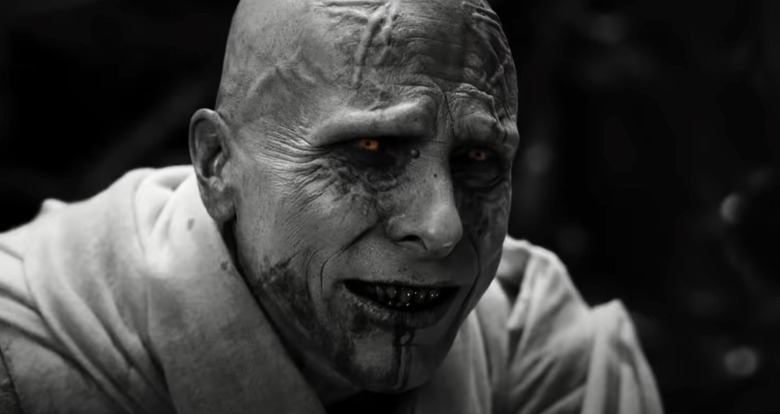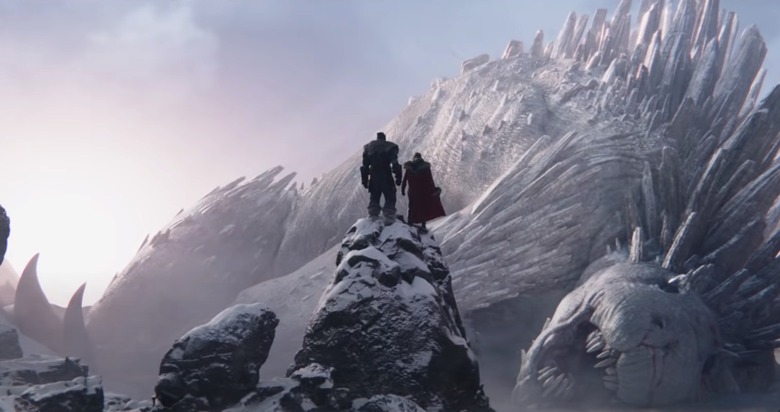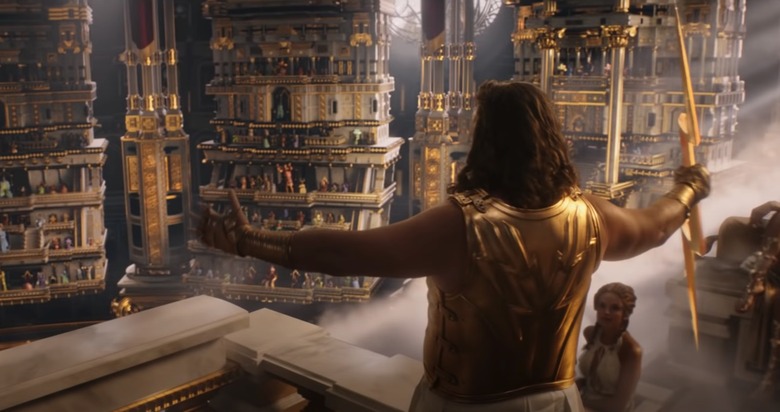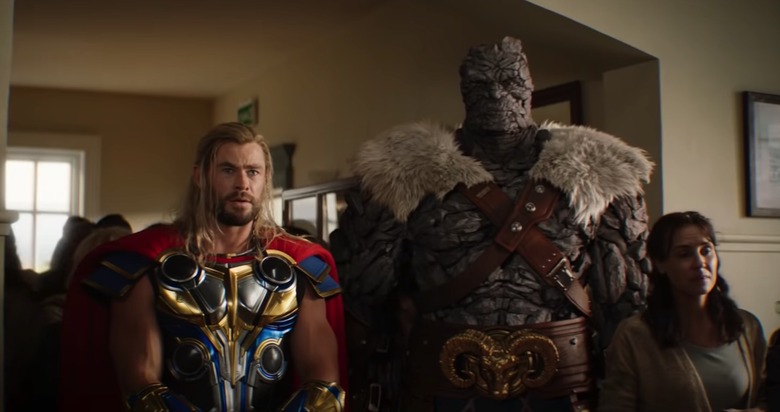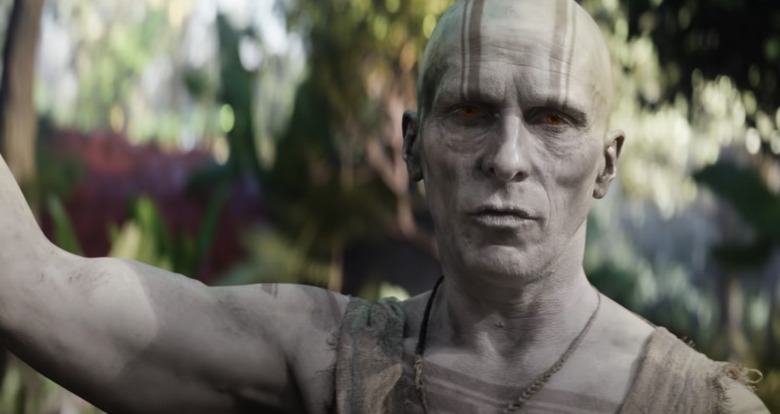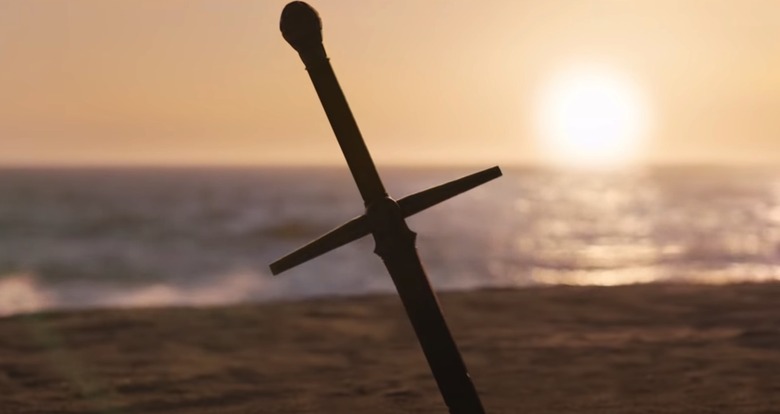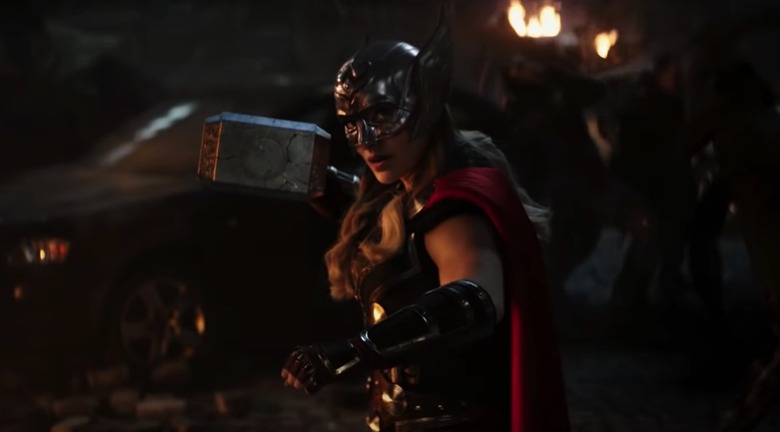Thor 4 Deaths: Everyone Who Died In Love And Thunder
Thor: Love and Thunder is finally out in theaters worldwide, with the fourth installment in the Thor franchise eying a solid opening weekend, in line with previous MCU movie premieres. Unlike Doctor Strange in the Multiverse of Madness and Spider-Man: No Way Home, Thor 4 might not be as consequential for the MCU. But Love and Thunder does feature tragic events, and we're about to explain every death in Thor 4 along with what it means for the bigger picture in the MCU.
Before we get to it, you should know that big spoilers follow below. You should check out our spoiler-free Thor: Love and Thunder review if you want a spoiler-free take on Thor 4.
Every death we saw in Thor 4
Mind you, you're about to discover everything about the tragic deaths that Marvel delivered in Thor 4. We'll also discuss fake deaths. Spoilers abound beyond this point.
The death and resurrection of Love
You have to wait until the end of the movie to understand what Love and Thunder means. There's a lot of love and thunder in Thor 4. But the title refers to Gorr's daughter's name. Gorr's daughter dies early in the movie, and that's why Gorr decided to denounce his religion.
Despite losing the physical battle with Gorr, Thor and Jane ultimately convince the villain not to use his one wish at Eternity to murder all of the gods in the universe. Instead, Gorr asks for Love back, and Eternity delivers his daughter. Love has powers now, with Thor acting like her adoptive father.
The gods are not immortal
Despite its comedic approach, Love and Thunder proposes a few interesting concepts, including the challenge of all types of religion. Remove the layer of cringey jokes and you find a sympathetic villain.
Gorr the God Butcher (Christian Bale) loses his daughter despite his prayers. That's when he starts challenging the gods, vowing to kill all gods.
This is how Gorr becomes the God Butcher. But, unfortunately, Taika Waititi & Co. do not show that journey. We see Gorr before becoming the God Butcher, and what happens after he gets the infamous nickname.
Between those two events, Gorr kills exactly one god on screen. The god of his own world, who failed to answer his prayers and keep his daughter alive. The next death is off-screen, the scene we saw from the trailers, with that massive god slain on an icy planet (above).
We don't care about these gods, their names and deaths do not matter. Sadly, Marvel could have shown Gorr dispatching a few others. Not because we want to see more death on the screen, but because Bale's character needed that progression. You don't get to become the God Butcher with two kills.
And Thor 4 makes it clear that death doesn't spare gods. Gorr beats Thor (Chris Hemsworth) more than once, showing us that the God of Thunder can indeed be bested in battle. Similarly, Thor almost kills Zeus (Russell Crowe), setting in motion a chain of events that will lead to Thor 5.
Korg’s fake death in Thor 4
Taika Waititi almost killed his Korg character. Zeus's Thunderbolt went through Korg's rocky body in what could have been an incredibly heartbreaking death for a beloved character. However, Korg did not die. His face survived and he grew another body for himself.
Therefore, this isn't a real death in Thor 4. Instead, Love and Thunder showed that more races in the universe can resurrect themselves. Similar to what Groot (Vin Diesel) did in Guardians of the Galaxy Vol. 3.
Also, we saw a similar sort of death in Ragnarok with Miek. The character is now on Earth's Asgard, an assistant to King Valkyrie.
Gorr the God Butcher left the MCU too soon
Gorr's death is inevitable from the moment he picked up that powerful Necro Sword. That's a god-killing weapon that curses the user. The person wielding the weapon will die once they become separated.
That's exactly what we saw in Love and Thunder, with Gorr dying at the end of the movie. Marvel's decision to deliver Gorr's death in Thor 4 is somewhat annoying.
This is the sort of villain we would have loved to see more of in the MCU. Especially considering that we didn't get to see enough of him in Love and Thunder.
That said, Gorr's death is unavoidable in this version of the script. Gorr can't survive without the Necro Sword, and Jane (Natalie Portman) destroyed the weapon.
The Necro Sword is gone
Love and Thunder also delivers the death of another important weapon in the MCU. We saw Mjolnir destroyed in Ragnarok. Then the Infinity Stones were turned into particles in Endgame. Add the Book of the Vishanti and the Darkhold's demise in Doctor Strange in the Multiverse of Madness, and there's a clear pattern here.
Dangerous weapons won't survive forever in the MCU. And it's now time for the Necro Sword to perish.
Destroying the god-killing weapon wasn't easy. It was up to Jane to shatter it into pieces and then turn those pieces into dust with the help of Mjolnir's thunder. Otherwise, the Necro Sword might have escaped death in Thor 4, thanks to its ability to repair itself.
Jane’s death in Thor 4
If there's one thing we didn't expect in the months preceding Love and Thunder, it was for Jane to die. It seemed that Thor 4 might help Marvel pass the mantle from Hemsworth's Thor to a new Thor, in line with what's happening with other Marvel heroes.
But Jane developed a dangerous type of cancer off-screen. And no amount of Mjolnir magic was able to heal her. The hammer might have restored her health while she was using it, but it also depleted her life force. Jane's ultimate sacrifice came in the final battle of the movie, where she used Mjolnir to destroy the Necro Sword.
Puzzlingly enough, she died an Asgardian death. She went to Valhalla in the post-credits, with Heimdall (Idris Elba) welcoming her there.
That's to say that her death might not be final, even though she's the last character to die in Thor 4.
More Marvel coverage: For more MCU news, visit our Marvel guide.
